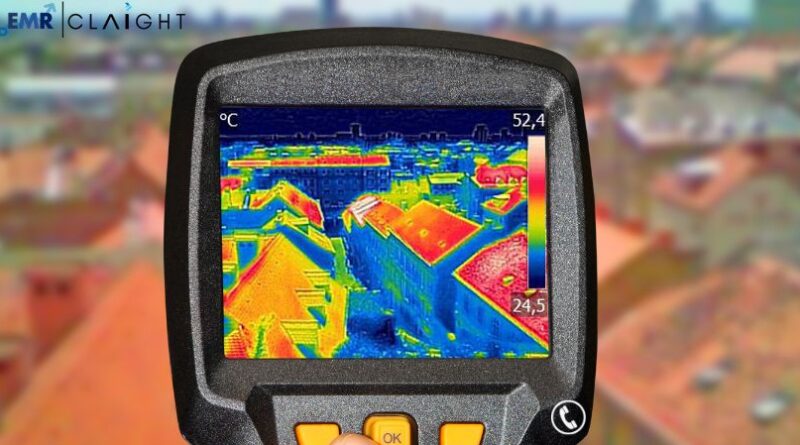Electro-Optical/Infrared Systems Market Size & Industry 2032
The global electro-optical/infrared (EO/IR) systems market size, which reached a valuation of USD 15.07 billion in 2023, is on an upward trajectory. Projected to grow at a Compound Annual Growth Rate (CAGR) of 3.7% from 2024 to 2032, the market is expected to hit USD 18.88 billion by the end of the forecast period. This growth is primarily driven by the escalating demand for advanced surveillance and targeting systems across defense, homeland security, and various commercial sectors.
Market Outlook
The EO/IR systems market is experiencing substantial growth due to increasing geopolitical tensions and the global emphasis on enhanced surveillance and security measures. These systems, crucial for day and night vision across multiple spectra, are becoming indispensable tools in modern warfare, border security, and various civilian applications.
Get a Free Sample Report with Table of Contents – https://www.expertmarketresearch.com/reports/electro-optical-infrared-eo-ir-systems-market/requestsample
Report Overview
This comprehensive report explores the intricate dynamics of the EO/IR systems market, detailing the technological advancements, market drivers, challenges, and segmentation that are shaping its future. It provides stakeholders with profound insights into the pathways and strategies influencing market growth from 2024 to 2032.
Market Size and Dynamics
The expansion of the EO/IR systems market is fueled by several key factors:
- Enhanced National Security Needs: With rising global security concerns, nations are investing heavily in advanced surveillance technologies to bolster defense and security infrastructures.
- Technological Advancements: Innovations in thermal imaging, laser range-finding, and multispectral and hyperspectral imaging are broadening the applications of EO/IR systems.
- Integration in Unmanned Systems: The increasing deployment of unmanned aerial vehicles (UAVs) in both military and civilian sectors has spurred the demand for integrated EO/IR systems.
Market Drivers
- Rising Demand for Border Surveillance: Enhanced border security measures necessitate sophisticated surveillance systems capable of operating in diverse environmental conditions.
- Advancements in Technology: Continuous improvements in EO/IR technologies have led to better image resolution, detection ranges, and reliability, making these systems more attractive across various sectors.
- Growth in the UAV Market: The expanding use of UAVs for military surveillance, commercial inspections, and recreational activities has significantly driven the demand for EO/IR systems.
Key Market Challenges
- High Cost of Advanced EO/IR Systems: The development and deployment of cutting-edge EO/IR systems involve high costs, which can be a barrier to adoption, particularly in budget-constrained sectors.
- Complexities in Technology Integration: Integrating advanced EO/IR systems with existing platforms poses significant challenges, requiring substantial R&D investments and technical expertise.
- Regulatory and Environmental Constraints: Stringent regulations regarding the use of certain technologies and the need to minimize environmental impact while deploying these systems can impede market growth.
Market Segmentation
By Technology
- Cooled
- Uncooled
By Sensor Technology
- Scanning Sensor
- Staring Sensor
By Imaging Technology
- Multispectral
- Hyperspectral
By Wavelength
- Ultraviolet
- Short Wavelength Infrared (SWIR)
- Medium Wavelength Infrared (MWIR)
- Long Wavelength Infrared (LWIR)
- Near Infrared (NIR)
By Platform
- Land
- Airborne
- Marine/Naval
By End Use
- Military
- Commercial
Recent Developments
Recent advancements include the integration of artificial intelligence (AI) in EO/IR systems to enhance automated image analysis and decision-making processes. Additionally, the development of compact and energy-efficient systems has made EO/IR technologies more accessible for smaller platforms and commercial applications.
Component Insights
Key components of EO/IR systems include high-resolution sensors, advanced imaging software, and robust hardware designed to withstand extreme environmental conditions. These components are crucial for ensuring the effectiveness and reliability of EO/IR applications.
End-user Insights
Military and homeland security agencies are the primary users of EO/IR systems, utilizing these technologies for surveillance, reconnaissance, and target acquisition. Commercial sectors such as aerospace, maritime, and industrial manufacturing also increasingly rely on EO/IR systems for monitoring and operational efficiency.
Regional Insights
- North America: Leads the market due to significant investments in defense and security.
- Asia Pacific: Rapidly growing due to increased defense spending and technological adoption.
- Europe: Strong focus on innovating EO/IR technologies, supported by substantial R&D initiatives.
Key Market Players
Major players in the EO/IR systems market include:
- Raytheon Technologies Corporation
- Lockheed Martin Corporation
- Thales Group
- Northrop Grumman Corporation
- BAE Systems PLC
These companies are spearheading the development and deployment of EO/IR systems globally, constantly innovating to stay ahead in a competitive market.
Market Trends and Industry News
The market is witnessing a trend towards lightweight and more versatile EO/IR systems, suitable for a wider range of platforms, including small tactical units and commercial drones. Furthermore, partnerships between governments and tech companies are enhancing the development of next-generation EO/IR systems.
FAQs
Q1: What drives the demand for EO/IR systems?
- A1: Increasing global security threats and the need for advanced surveillance capabilities are primary drivers.
Q2: What are the challenges in the EO/IR systems market?
- A2: High costs, technological complexities, and stringent regulations are major challenges.
Q3: Which region leads in EO/IR system advancements?
- A3: North America, due to its robust technological infrastructure and defense spending.
Q4: How is technology impacting the EO/IR systems market?
- A4: Technological advancements are enhancing the capabilities and reducing the costs of EO/IR systems.
Q5: What future trends are shaping the EO/IR systems market?
- A5: Integration of AI and the development of smaller, more energy-efficient systems are key future trends.
Q6: Who are the major players in the EO/IR systems market?
- A6: Companies like Raytheon, Lockheed Martin, and BAE Systems are leading the market.

